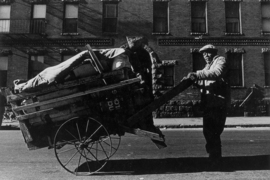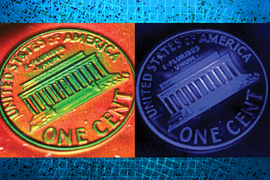MIT PhD student Evan Kramer discovered his passion for astrophotography as a high schooler, when he realized words alone were failing to communicate the sense of wonder he found in stargazing. Since coming to MIT, his fascination has expanded into urban astrophotography, which combines technical skill with artistry in creating composite images using brightly lit cityscapes as a backdrop.
Over the past year, Kramer has shifted his camera’s focus a little closer to home: his fellow Department of Aeronautics and Astronautics (AeroAstro) researchers. In a new series entitled “Astro Portraits,” Kramer has taken to MIT’s rooftops, high-tech equipment and willing peers in tow, to capture images of grad students and their projects against carefully composed images of a night sky in dialogue with their research.
The inspiration for the portraits series came as much from his peers’ work as from his own desire to keep pushing himself on a technical level. “Capturing Astro Portraits of fellow AeroAstro graduate students is my attempt to document leaps in engineering innovation and to turn the spotlight on the people responsible. Each astro portrait intertwines the student’s identity, their research, and night scenes of MIT’s campus into a cohesive narrative that is simultaneously unique and related,” says Kramer. “This subset of Astro Portraits speaks to the diversity of research underway at MIT AeroAstro and the commitment my fellow graduate students have for contributing to their respective fields and continuing to push the boundaries of what is possible.”
In each portrait, Kramer attempts to represent some operational aspect of the research using the night sky, framing a narrative that captures a specific moment in a student’s progress in their research contrasted against a specific night sky element — star trails, nebulae, aircraft traffic — that speaks to the larger goals of their work.
“This challenge drew me into creating art that tells a cohesive story by incorporating elements of science and technology, human emotion, the passage of time, and night photography in an urban setting while not overwhelming the viewer,” he says. “Having a preview of tomorrow’s engineering wonders is a rare privilege, especially when your peers are the ones charting the course. So, where are the next generation of engineers taking us?”
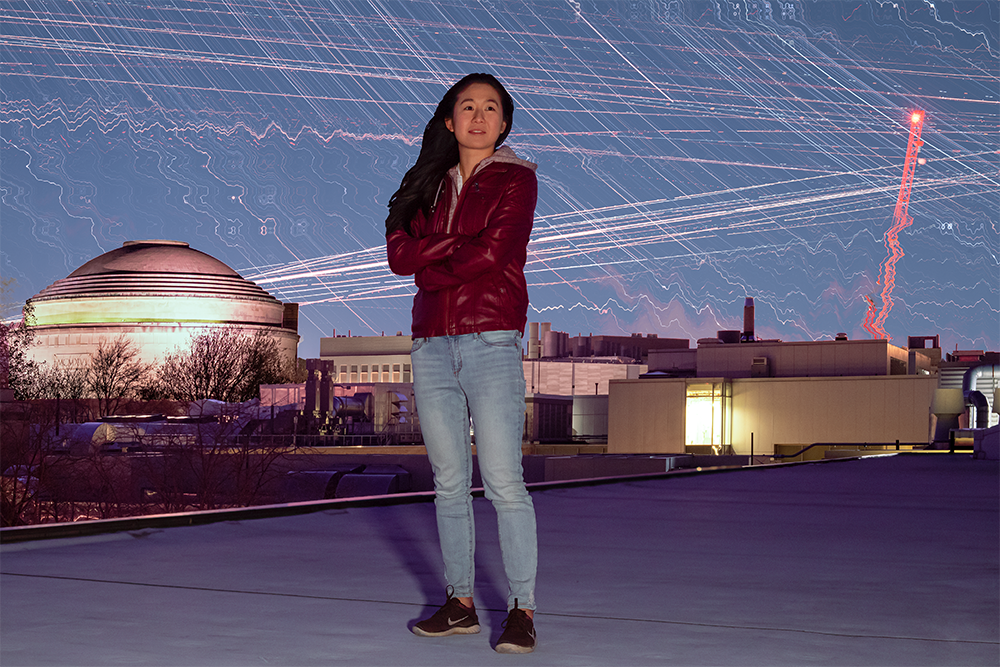
The airplane trails in PhD student Juju Wang’s portrait represent the research she conducts in the International Center for Air Transportation (ICAT). Her work focuses on the aircraft noise pollution that communities experience in large cities with nearby airports. While it’s possible to quantify aircraft noise pollution using sound level meters, measuring its impact on human sleep patterns, cognitive development, and general irritation is more nuanced, since the contributing factors are multifaceted. In her research, Wang asks such questions as, “Is it more annoying for a plane to pass very close to your house once an hour, or for a plane to fly over your house in the distance once every 90 seconds?” and “How can we ensure that flight paths over communities are allocated equitably?”
By assessing the change in noise pollution due to differences in aircraft flight patterns over a five-year period, Wang will attempt to correlate the changes in aircraft flight paths with housing prices to put a monetary value on aircraft noise pollution. She presented her findings to date in an article, “A method for correlating community noise complaints and overflight events on an individual basis,” at the 2023 AIAA Aviation and Aeronautics Forum.
“My intention was to capture as much air traffic as possible by pointing the camera at a specific part of the sky. Research into Boston Logan airport’s flight paths gave insight into the best photographer-subject orientation,” says Kramer.
Factoring safety into the equation
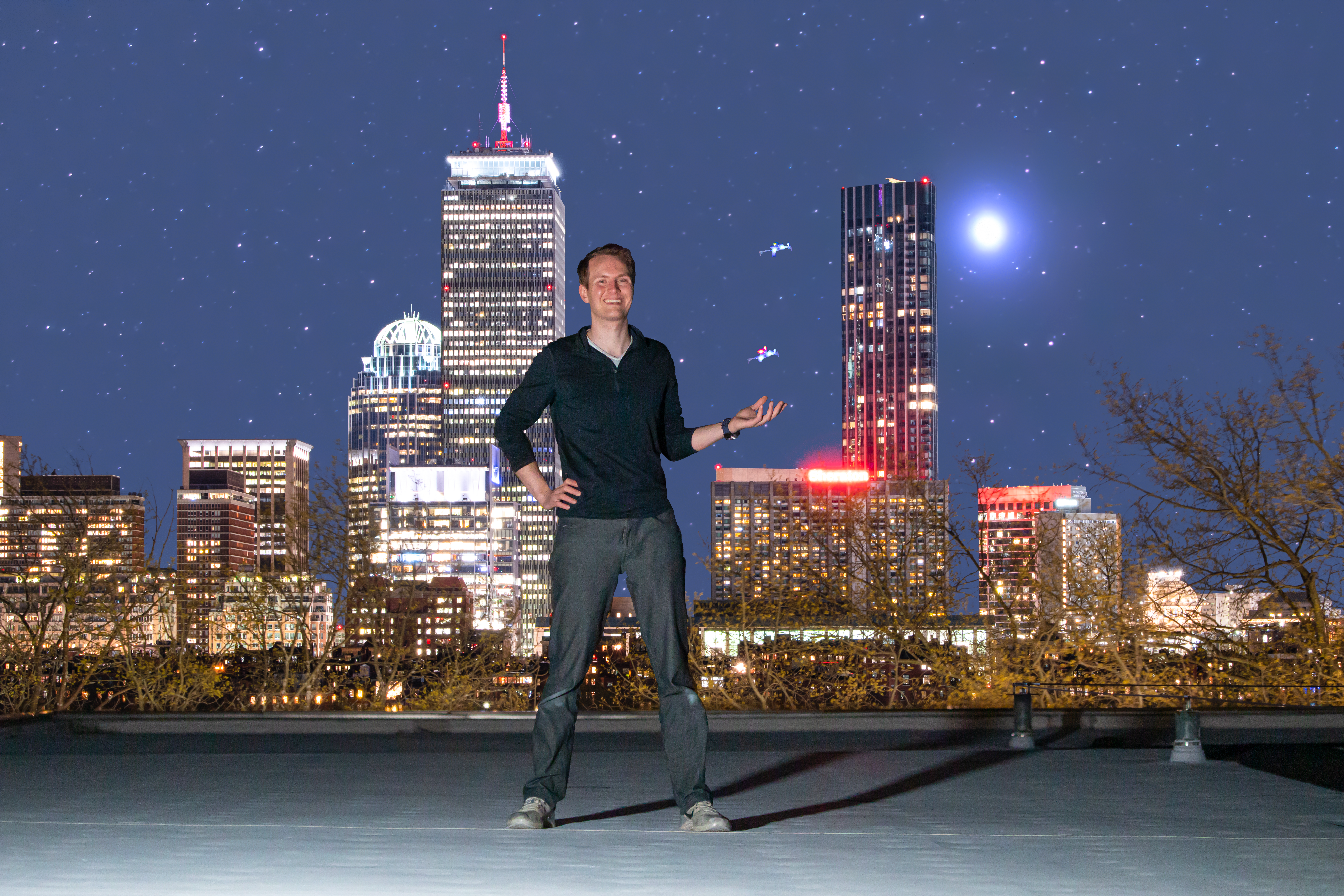
A PhD student and National Science Foundation Research Fellow in the Reliable Autonomous Systems Laboratory, Charles Dawson is working to enhance the intelligence and safety of autonomous systems. To catch failure modes present in complex systems during early stages of the design process, Dawson develops general-purpose computational tools to augment the way engineers currently conceptualize their ideas. His work will contribute to a future in which drones are able to safely navigate through urban environments to deliver packages to your front door.
His latest tool identifies unsafe emergent behavior due to the interaction between multiple individual systems. Dawson has applied the tool to fleets of autonomous aerial vehicles to identify failure modes due to the interaction of neighboring vehicles. He presented his most recent paper, “Certifiable Robot Design Optimization using Differentiable Programming,” at the 2022 Robotics: Science and Systems conference.
Calibration for climate predictions
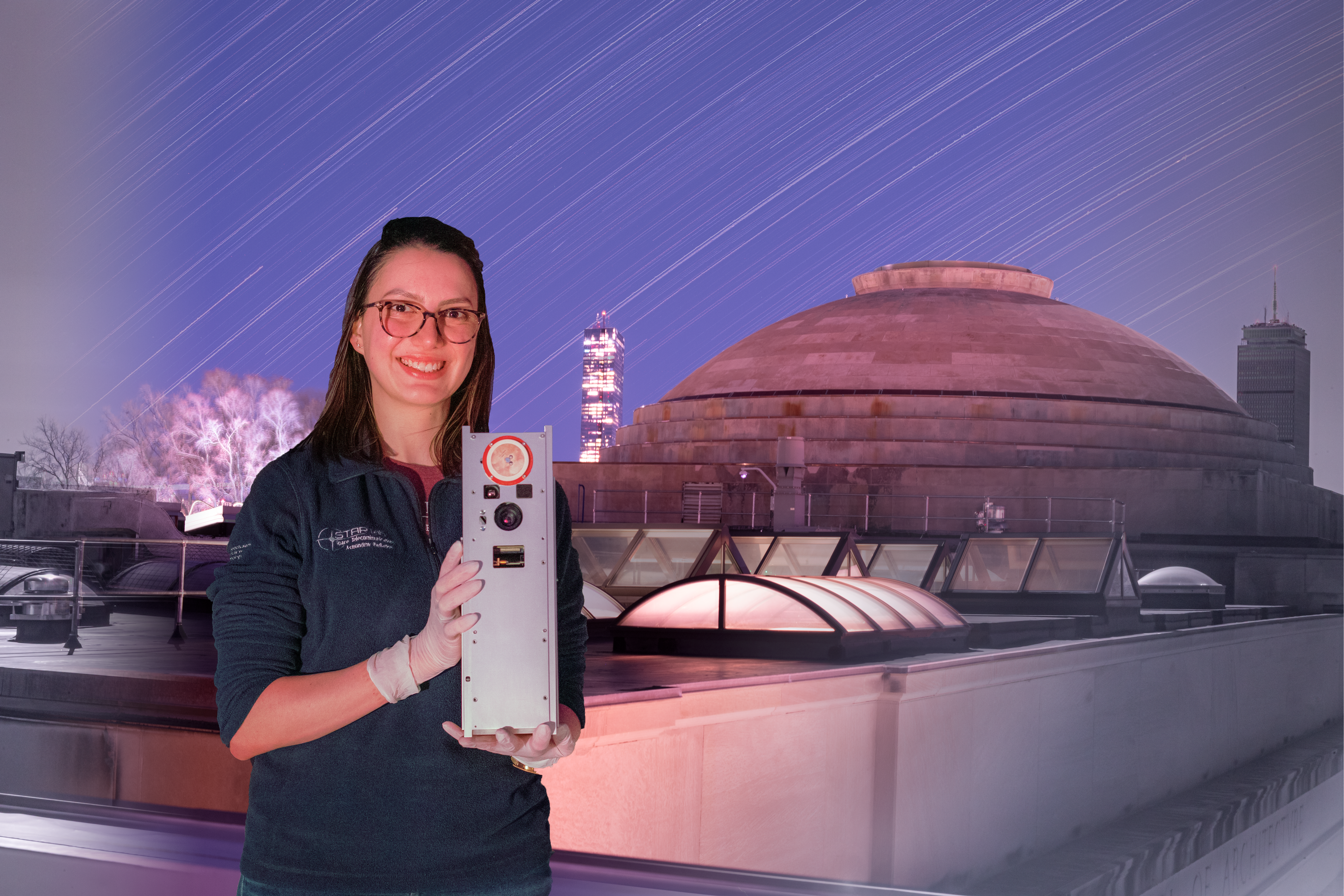
Paula do Vale Pereira PhD ’22 was part of a team that worked on BeaverCube, a small spacecraft that aimed to measure the temperature and color of the surface of the ocean on the northeastern coast of the United States from space. Such measurements may provide insights into large-scale ocean circulation and its influence on climate change.
Do Vale Pereira was part of the Space Telecommunications, Astronomy and Radiation Laboratory (STAR Lab), led by Professor Kerri Cahoy. Do Vale Pereira led the assembly, integration, and testing of BeaverCube and authored a conference publication on the spacecraft design at the 2020 Small Satellite Conference, entitled “BeaverCube: Coastal Imaging with VIS/LWIR CubeSats.” Launched in July 2022, BeaverCube was a milestone in the design of other spacecraft currently being developed in STAR Lab.
A space telescope that twirls
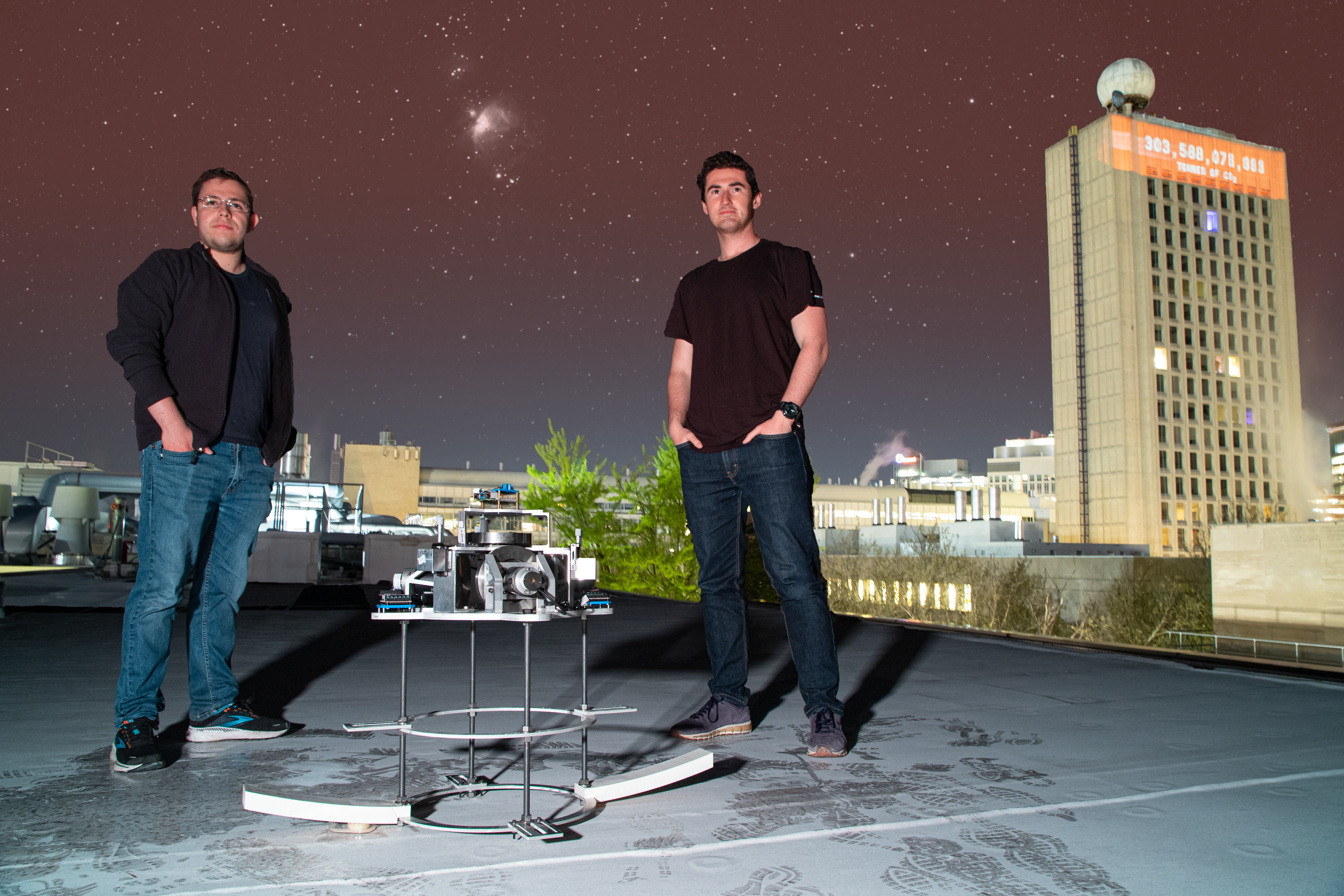
Kramer worked as a team with Alejandro Cabrales in the Space Systems Laboratory on rotating synthetic aperture (RSA) space telescopes. Rather than a traditional circular mirror, RSA telescopes employ a high-aspect ratio rectangular mirror. These telescopes spin around a single axis, while simultaneously tracking a target and capturing a series of images. This design could enable extremely large, effective aperture diameters of 10 meters and greater, due to a reduction in payload size and cost without sacrificing imaging performance. Cabrales and Kramer worked to demonstrate that an RSA hardware testbed of scalable geometric and mass distributions can be pointed and spun to the degree of accuracy necessary to enable quality image acquisition.
Cabrales was primarily responsible for developing the guidance, navigation, and control algorithms used on the hardware testbed; while Kramer characterized the testbed’s attitude sensors and created test cases using orbital dynamics simulations. The algorithms Cabrales developed were tailored for the highly dynamical nature of a rotating synthetic aperture, and accommodated the nonlinear dynamics that are not typically present in more traditional space telescope design. The successful demonstration of accurate pointing and spinning control of this testbed, described in a journal article under preparation, is a major milestone in advancing the readiness of this promising new design.
“After capturing all the frames in our portrait, I reflected on the unique photos we had just taken, and the reality of troubleshooting hardware and deadlines that lay ahead of us,” remembers Kramer. “Creating the future is difficult, and there’s always a lengthy story of mishaps and failures behind every success. But being surrounded by such rich creativity and opportunity pushes us forward.”
Kramer notes that AeroAstro Manager of Infrastructure Anthony Zolnik and MIT Environment, Health, and Safety Officer Joseph MacLeod enabled the capture of the photographs in this story in a safe manner. Alex Curt, Allegra Horstmann, and Noah Salk supported the capture of the story’s feature image.


